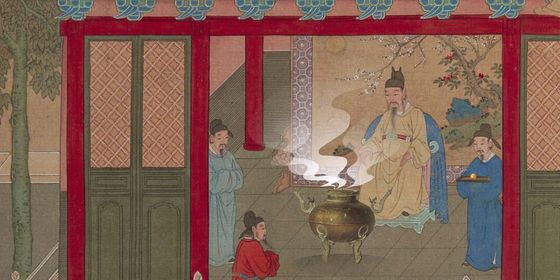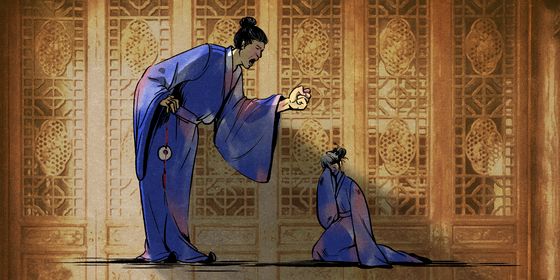A turn of the century doctor changes culinary culture forever
Born the ninth granddaughter in a respectable, traditional family in 1889 in Nanjing, Buwei Yang (杨步伟) was taught that proper ladies do not belong in the kitchen. Her purpose in life was to get married and be the mistress of her own household, engaged to her cousin before she was even born. But, her life took her on a different course, one that would turn her into the first person to introduce authentic Chinese food culture to an English speaking audience.
With the California Gold Rush in the mid-19th century came the Chinese immigrants and their food, but Chinese culinary culture had not yet garnered any attention. Later, chop suey and chow mein appeared as nicknames for Chinese food, but no one is quite sure of their true culinary genealogy.
Yang’s landmark work, How to Cook and Eat in Chinese, was first published in 1945 by the John Day Company in New York. It offered over 200 authentic family recipes from across China—from salt-water duck to crossing-the-bridge noodles, from red-cooked pig feet to pot-stuck bean curd, and from stirred beef kidney to soup for the gods. All could be cooked with ingredients found in ordinary markets and the burgeoning Chinese shops opening in the US. If nothing else, this book coined the term “stir-fry” in English, which was defined as “a big-fire-shallow-fat-continual-stirring-quick-frying of cut-up materials with wet seasoning”.
Despite being an insightful observation into Chinese cuisine, it also opened a window to Chinese culture, often delightfully charming and amusing. When discussing the different styles of eating, she compares communal eating to carrying on a conversation and wonders, “if it is because the American way of each eating his own meal is so unsociable that you have to keep on talking to make it more like good manners?” At other times, she depicts Chinese customs in a comical way that still rings true today: “Table manners begin with a fight over yielding precedence in entering the dining room…After a properly long dead-lock, some elder guest will yield and say ‘Better obedience than deference’.” Yang even presents a motto for the battlefield of Chinese banqueting, which is “await, avoid, and attack”, wise words considering you usually have to wait for the best dishes.
In a 2004 New York Times article, editor and publisher Jason Epstein believed that the book was actually written by Yang’s husband in her name because of the wording. It’s understandable since Yuan Ren Chao (赵元任), Yang’s husband (who was not her cousin, by the way), was a renowned linguist and gifted polyglot. He did help her translate the book, putting much of the good English translated by their daughter, Rulan Chao, back to “Chinglish”, because it sounded more interesting.
He occasionally inserted his own voice in the book by adding various footnotes and even wrote a recipe himself, the culinary ABC’s of “stirred eggs”, deliberately applying an academic writing style to make readers laugh: “To test whether the cooking has been done properly, observe the person served. If he utters a voiced bilabial nasal consonant with a slow falling intonation, it is good. If he utters the syllable yum in reduplicated form, it is very good.”
It was a family project of sorts, but Yang was unmistakably the brains behind it. Her life was a series of adventures, in which her wit, curiosity, perseverance, and sense of humor always prevailed, something readers find reflected in the book.
Cooking, though, was never Yang’s true ambition, destined as she was for greater things. It was the end of Qing Dynasty (1616 — 1911), a turning point from the old to the new, and Yang actively supported revolution at a young age. Even before she finished her own education at the age of 20, she was appointed the principal of a vocational school for female soldiers and did, by all accounts, a fantastic job at managing it. When, at one point, mutinous soldiers threatened to attack the school, she directed the defense preparations by arranging 130 guards with only her knowledge of Sun Tzu and the Story of the Three Kingdoms.
Like today’s students abroad, Yang was forced to develop her cooking skills while studying medicine in Japan because she was not used to the local food. “I had always looked down upon food and things,” she says in her book. “But I hated to look down upon a Japanese dinner under my nose.” So, by the time she became a doctor and returned home, her family was greatly surprised when they were treated a feast of 32 dishes with “a little imagination and invention”.
Though naturally talented, cooking was still not high on her agenda, as she was busy running a hospital she founded with another female doctor in a hutong in Beijing.
But life is full of surprises. Years later, when Yang’s second daughter wanted to study medicine, Yang advised her against it because it was hard for women to run a practice and take care of a family. Yang, in this case, spoke from experience; her career was thrown into a tailspin by her own marriage, though it was an admittedly happy one. Yang followed Chao as he taught at Harvard, Tsinghua, and Yale, all while managing to travel extensively across Europe.
As Chao did field research on dialects across China, Yang took the time to learn local specialties. But it was decades later, during WWII, that she became engrossed in the culinary arts. When the Chao family (four daughters in all) lived in Cambridge, Massachusetts, she cooked for the China Relief lunch once a week, usually for hundreds of people. She cooked for Chao’s colleagues and students as they trained American soldiers in speaking Chinese, as well as translating maps for the Allies. When news would come that a certain area was bombed by the Allies, a translator would shout, “That’s my section of the map!” To Yang, it was the night of shrimp noodles.
Due to a shortage of supplies in wartime, Yang often had to be quite resourceful. She felt great shame at seeing the American markets throw away chicken gizzards, livers, and other edible materials, and thus finally decided to write her Chinese cookbook for an American audience.
The book was a success, reprinted more than a dozen times and sold around the world. Yang was constantly approached for lectures and even, eventually, cooking shows on TV, but she always turned them down, telling them that if people didn’t grasp what she wrote in her book, then she obviously didn’t write it well.
“I am ashamed to have written this book,” she states at the start of her book, “because I am a doctor and ought to be practicing instead of cooking.” But her supporters would tell her otherwise; Pearl S. Buck wrote in a preface to Yang’s work that it was “of inestimable value to the war effort and also to the economy of peace”. She even wanted to nominate Yang for a Nobel Peace Prize, because nothing in the world brings cultures together like food that warms the body and the soul.
“The Accidental Chef” is a story from our newest issue, “Military”. To read the entire issue, become a subscriber and receive the full magazine. Alternatively, you can purchase the digital version from the iTunes Store.












